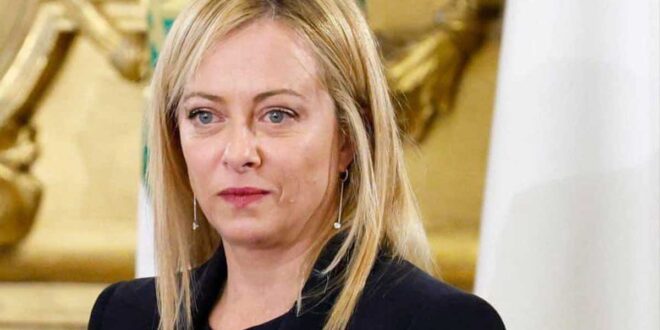Sana Khan
Giorgia Meloni, Italy’s first female prime minister, has reached her third year in power a rare milestone in a country known for rapid government turnover. Since her right-wing Brothers of Italy party’s 2022 election victory, she has maintained a firm grip on Italian politics. Her leadership has been characterized by caution, discipline, and a calculated avoidance of internal divisions that have plagued past governments. Markets and voters alike have rewarded her stability, with her approval ratings steady around 42% and her coalition polling higher than when elected.
Key Issues
Meloni’s governance model is defined by fiscal restraint but limited reform. Under her administration, Italy’s deficit has fallen from 8.1% of GDP in 2022 to a projected 3.0% this year, earning praise from rating agencies like Fitch. Yet, beneath the surface, Italy’s structural weaknesses persist slow growth, heavy bureaucracy, low productivity, and an ageing population. Industrial output has dropped roughly 7.5% in three years, while IMF forecasts show Italy lagging behind the broader eurozone in growth.
Her reliance on the EU’s €194 billion National Recovery and Resilience Plan (NRRP) has provided short-term relief but not sustainable progress. Critics say the funds have been scattered across local projects with little economic impact, unlike Spain’s targeted approach that fueled business innovation. Without these funds, economists warn, Italy might already be in recession.
Why It Matters
Meloni’s leadership has redefined Italian politics in subtle but significant ways. For investors and European partners, she represents a welcome anchor of predictability something Italy hasn’t seen in decades. However, her preference for preserving stability over pursuing reform could prove costly. Italy’s long-term challenges from labour inefficiencies to demographic decline threaten to erode the very stability she has built her image on. Moreover, her populist messaging on national identity and family values may win votes, but it does little to modernize Italy’s economic or institutional foundations.
Implications
The next two years will test whether Meloni’s cautious strategy can endure. The EU recovery funds will expire in 2026, and new U.S. tariffs could strain Italy’s export-driven economy. If growth stagnates, Meloni may struggle to sustain her current popularity without tangible improvements in living standards. Still, her dominance in domestic politics and weak opposition make her a likely frontrunner for the 2027 elections. On the international stage, her pragmatic ties with both the EU and Washington suggest continuity rather than disruption in Italy’s foreign policy posture.
Analysis
Meloni’s tenure so far reflects the paradox of modern populism in power a leader elected on promises of change who ultimately chooses continuity. Her steady hand has calmed markets and reassured allies, but the price has been reform inertia. In the short term, her political stability is Italy’s greatest asset; in the long term, it risks becoming its greatest vulnerability. Without bold structural shifts, Italy’s economy may continue to drift, buoyed by EU support but weighed down by its own stagnation. Meloni has mastered control but not yet transformation.
Author’s Bio:
Sana Khan, MPhil student of International Relations at the National Defence University, Islamabad, specializse in foreign policy and global strategic affairs, with research experience on China’s role in world politics and the Russia–Ukraine war. My interests also extend to security studies, great power politics, and the intersection of geopolitics and foreign policy decision-making.
 Geostrategic Media Political Commentary, Analysis, Security, Defense
Geostrategic Media Political Commentary, Analysis, Security, Defense





